Creamy Vegan Vegetable Korma

This vegan korma is rich, creamy and deliciously comforting! Made with veggies in a spiced cashew-coconut sauce, it tastes like it came from your favorite Indian restaurant — but is actually really easy to make at home.
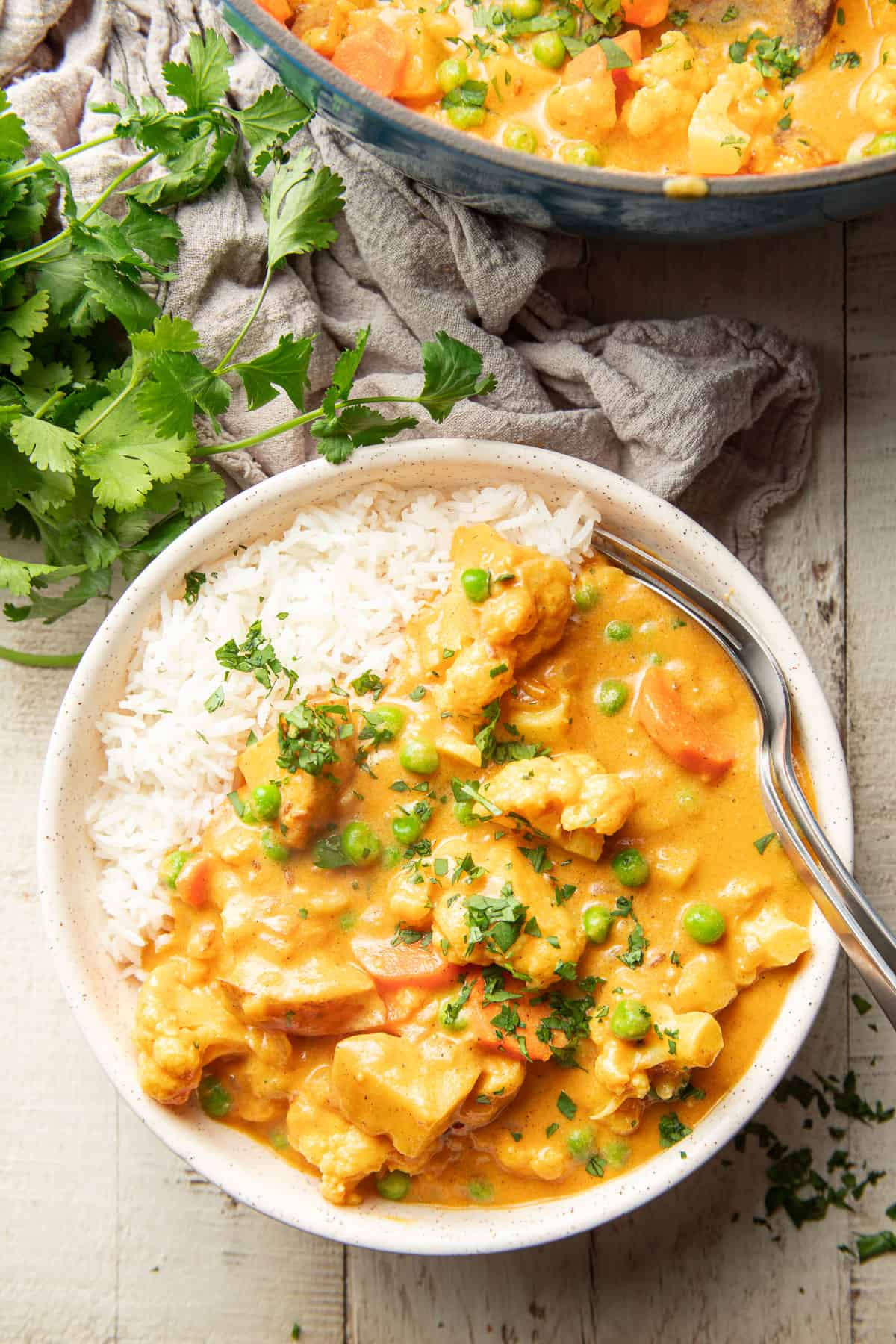
Korma was always one of my favorite Indian restaurant dishes to order when dining out. It was so creamy! So decadent!
Creating a vegan version would be downright impossible, right? Wrong!
When I finally became brave enough to start researching korma and entertaining the possibility of veganizing it, I was delighted to discover that while traditional versions do contain dairy, they don’t contain nearly as much dairy as I’d always though. Most recipes call for some heavy cream or yogurt. But they also call for super creamy ingredients that I already use in my vegan cooking, like coconut milk and cashews.
Eliminating the dairy from this curry wasn’t tough at all! In fact, the dish is, on the whole, pretty easy to throw together. I did incorporate a few shortcuts into my recipe, like using ground spices where traditional korma might call for whole ones. The result was a rich and creamy vegan curry that was absolutely delicious!
[feast_advanced_jump_to]
Ingredients You’ll Need
- Raw cashews. Raw cashews have a rich flavor and blend up smooth and creamy, so they’re a key element to this recipe. I don’t recommend substituting roasted cashews.
- Diced tomatoes. We’re keeping life easy and using canned tomatoes for our vegan korma.
- Garlic.
- Ginger.
- Vegetable oil. You can use any neutral high-heat oil you have on hand here. Coconut oil, peanut oil, canola oil and avocado oil are all fine options.
- Onion.
- Spices. You’ll need garam masala, ground cumin, whole cumin seeds, cardamom, coriander, and ground turmeric. Most of these can be found in the spice aisle of your regular supermarket. Whole cumin seeds may be the only exception. You can substitute with more ground cumin if you absolutely must.
- Coconut milk. Use the full-fat variety from a can. Light coconut milk will probably work if you need to reduce the fat and calorie content. I don’t recommend using coconut milk sold in cartons, which is heavily watered down.
- Water.
- Cauliflower.
- Potato. The recipe calls for a russet potato, but red or golden potatoes should also work just fine. You can really switch things up and use a sweet potato if you’d like.
- Carrots.
- Salt & pepper.
- Frozen peas.
- Fresh cilantro. Leave this out if you’re not into cilantro.
- Basmati rice.
How It’s Made
The following is a detailed photo tutorial on how to make this dish. Scroll all the way down if you’d like to skip right to the recipe!
Make the paste first. Blend your raw cashews, tomatoes, garlic and ginger until smooth. This can take a few minutes, particularly if you’re not using a high-powered blending device, so be patient.
Tip: You may find it challenging to get the mixture smooth if you’re using a very large blending device. If this is the case, add up to a half cup of water to help things along. You’ll be adding some water to the curry later anyway, so just subtract what you added to the paste when you get to that step.
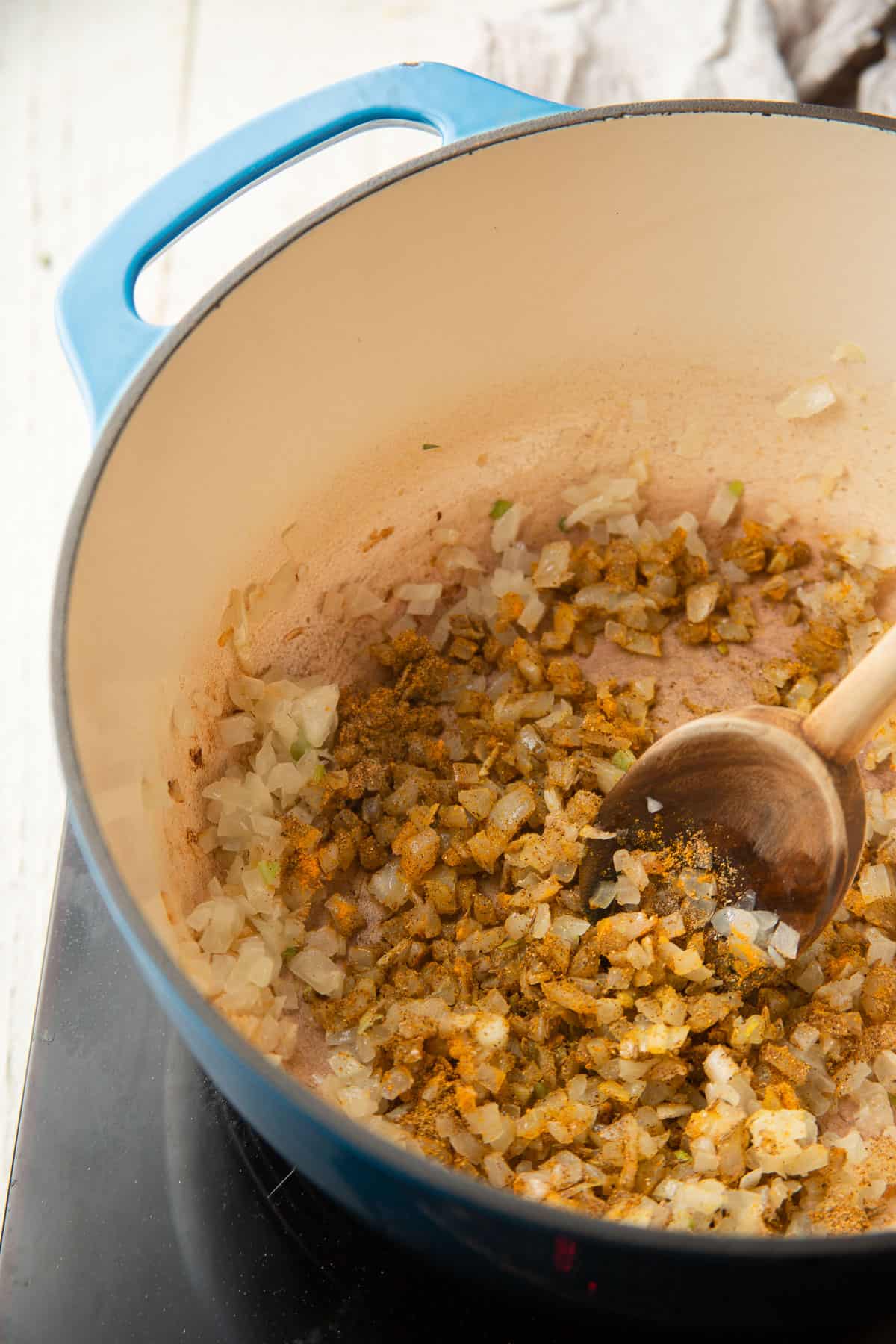
Heat your oil in a pot, add the onion, and cook it for a few minutes, until it starts to soften. Now add the spices and sauté them briefly with the onion.
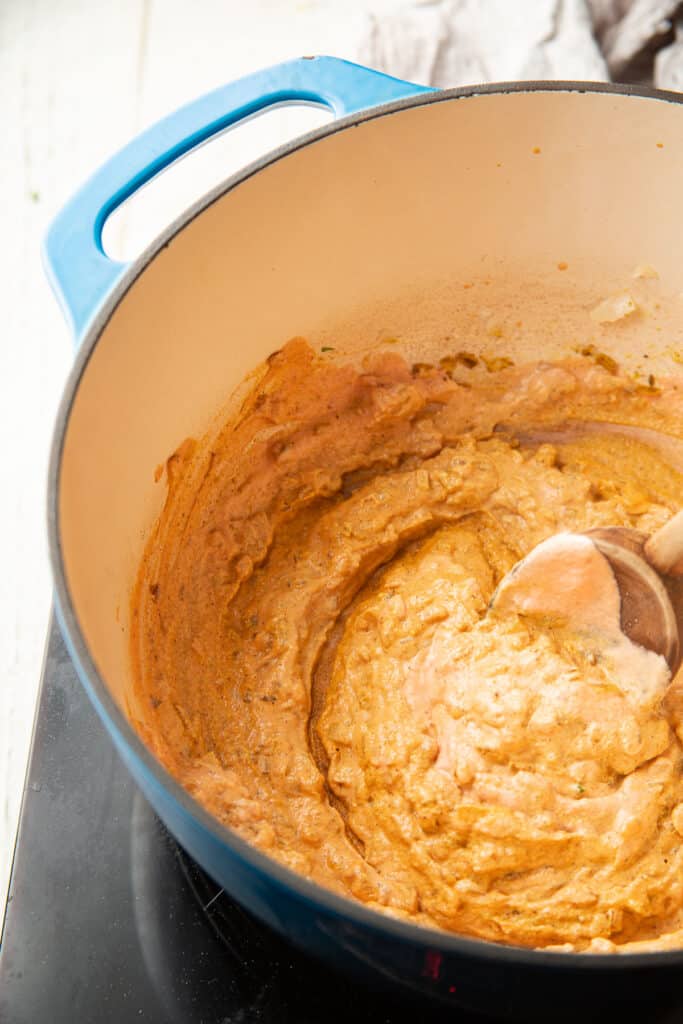
Add the paste to the pot and cook it with the onion and spices for a few minutes, stirring constantly. Keep going until it thickens and darkens a bit.
Tip: Be careful not to burn the spices or paste during these early cooking stages. It’s easy to do! Stir constantly and keep an eye on the heat level.
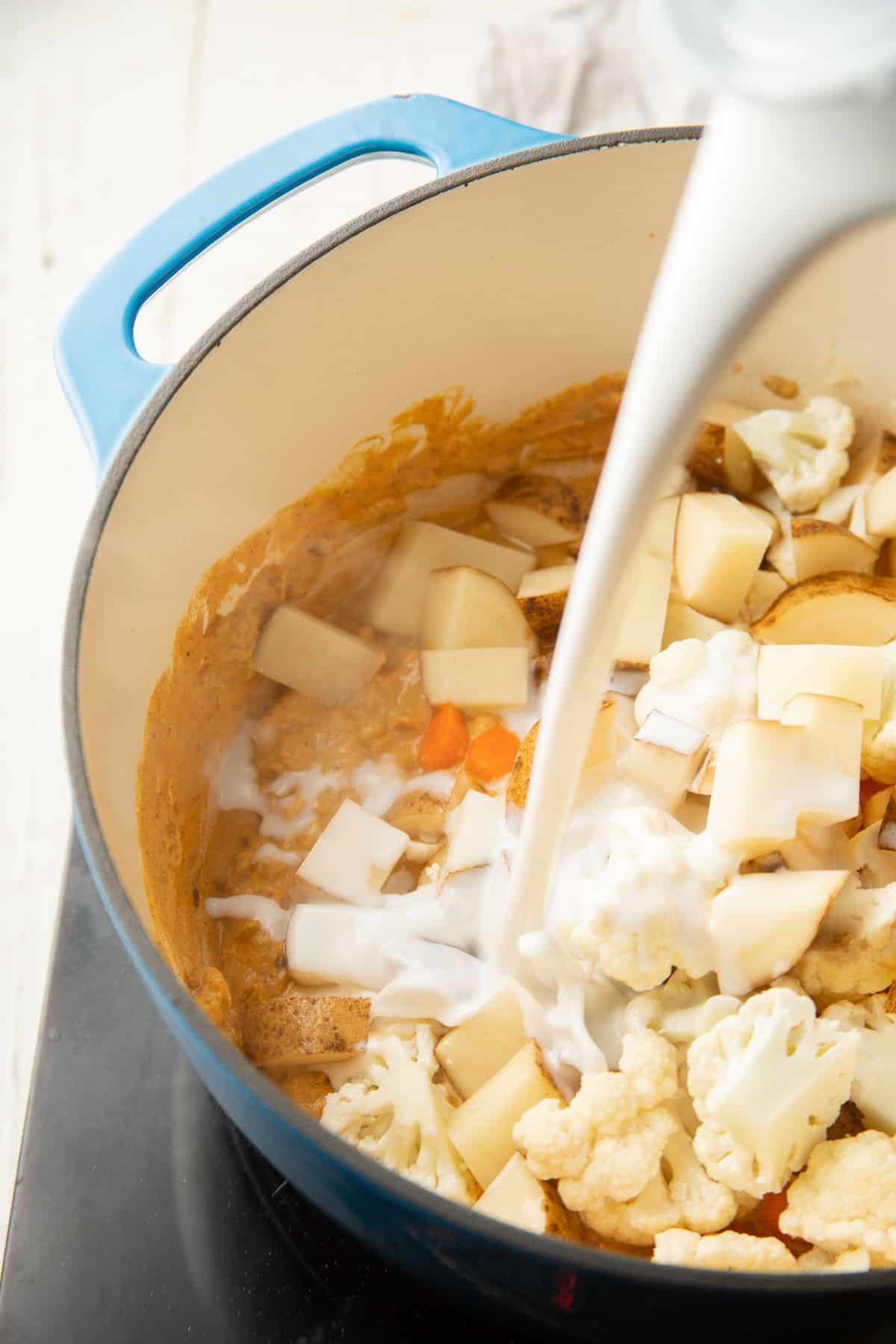
Add the coconut milk, water, cauliflower, potato, carrots and salt to the pot. Stir it up, raise the heat and bring it to a simmer.
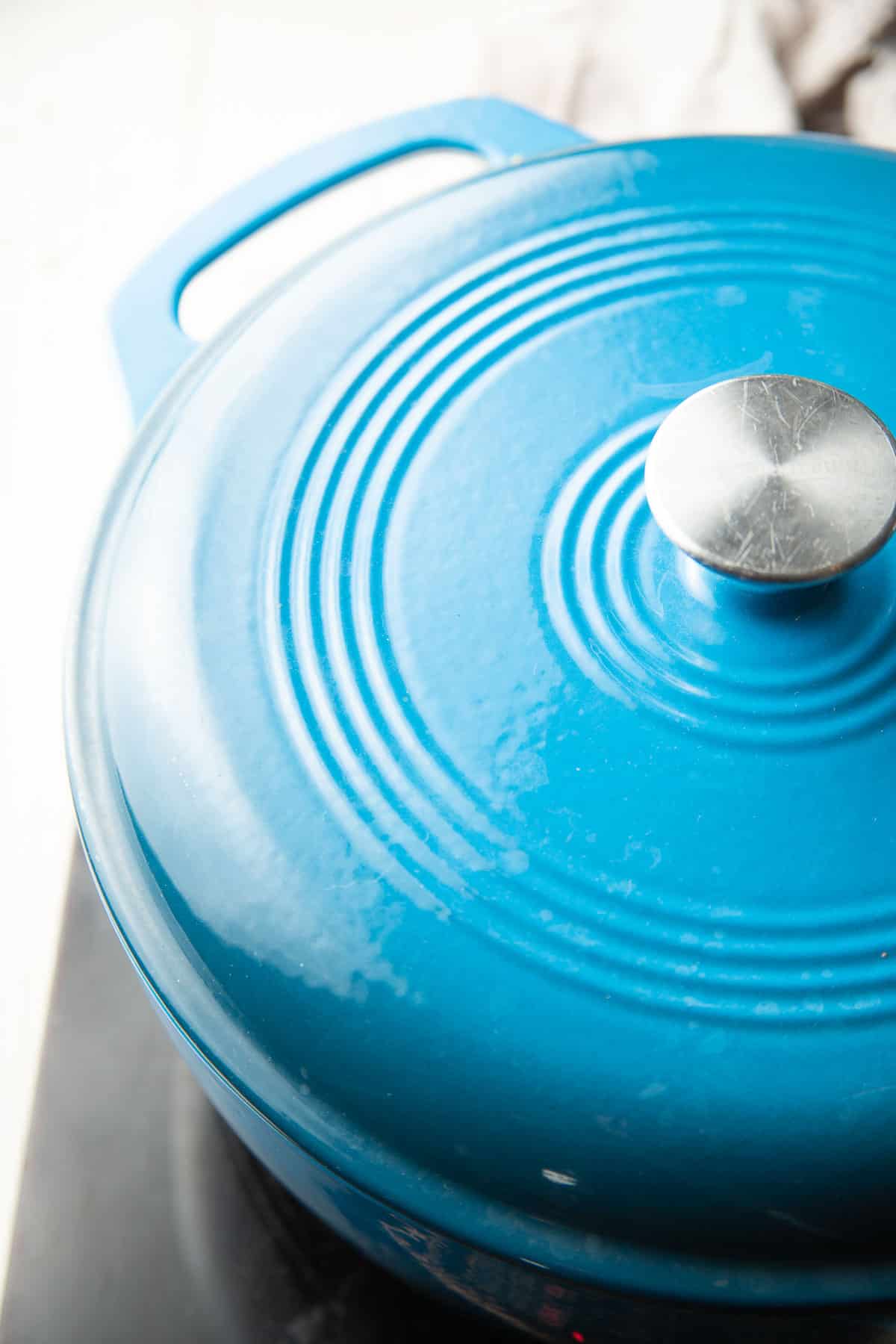
Now lower the heat and let the curry simmer with the lid on. Make sure to take the lid off and give it a good stir, scraping the bottom of the pot, every few minutes.
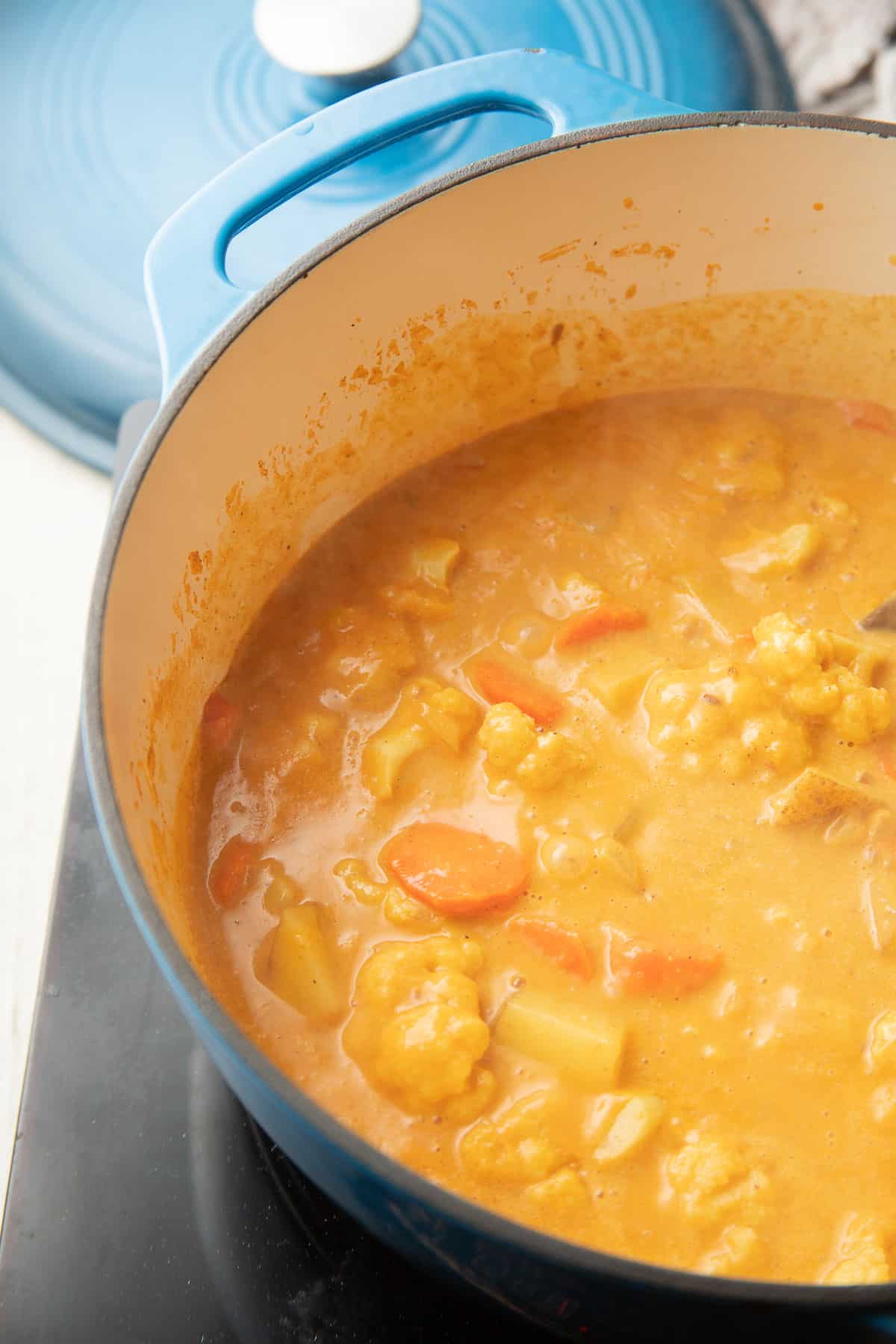
Uncover the pot and let your vegan korma simmer for a few minutes more. This will give the sauce a chance to thicken up.
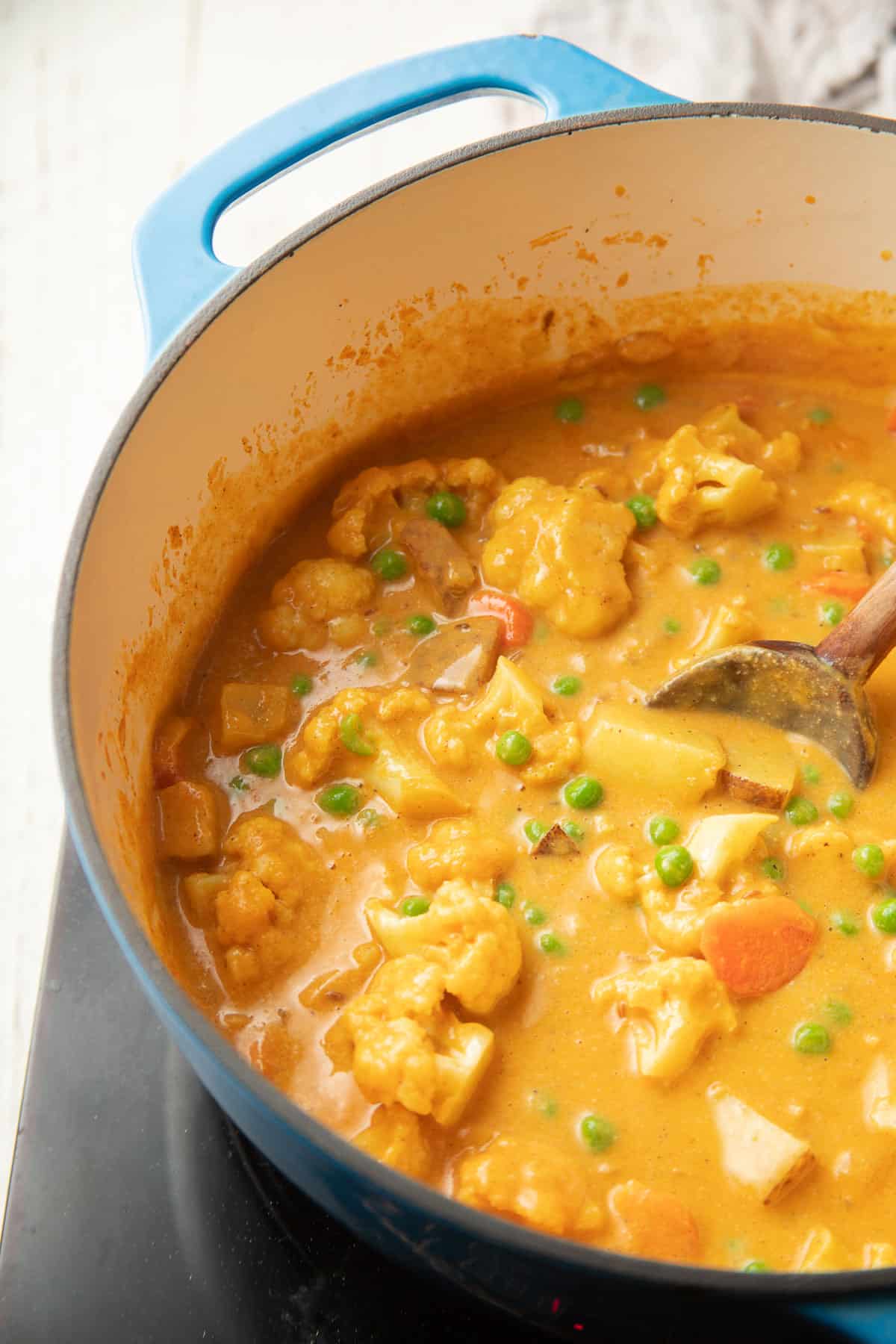
Stir in the peas and simmer just a minute more.
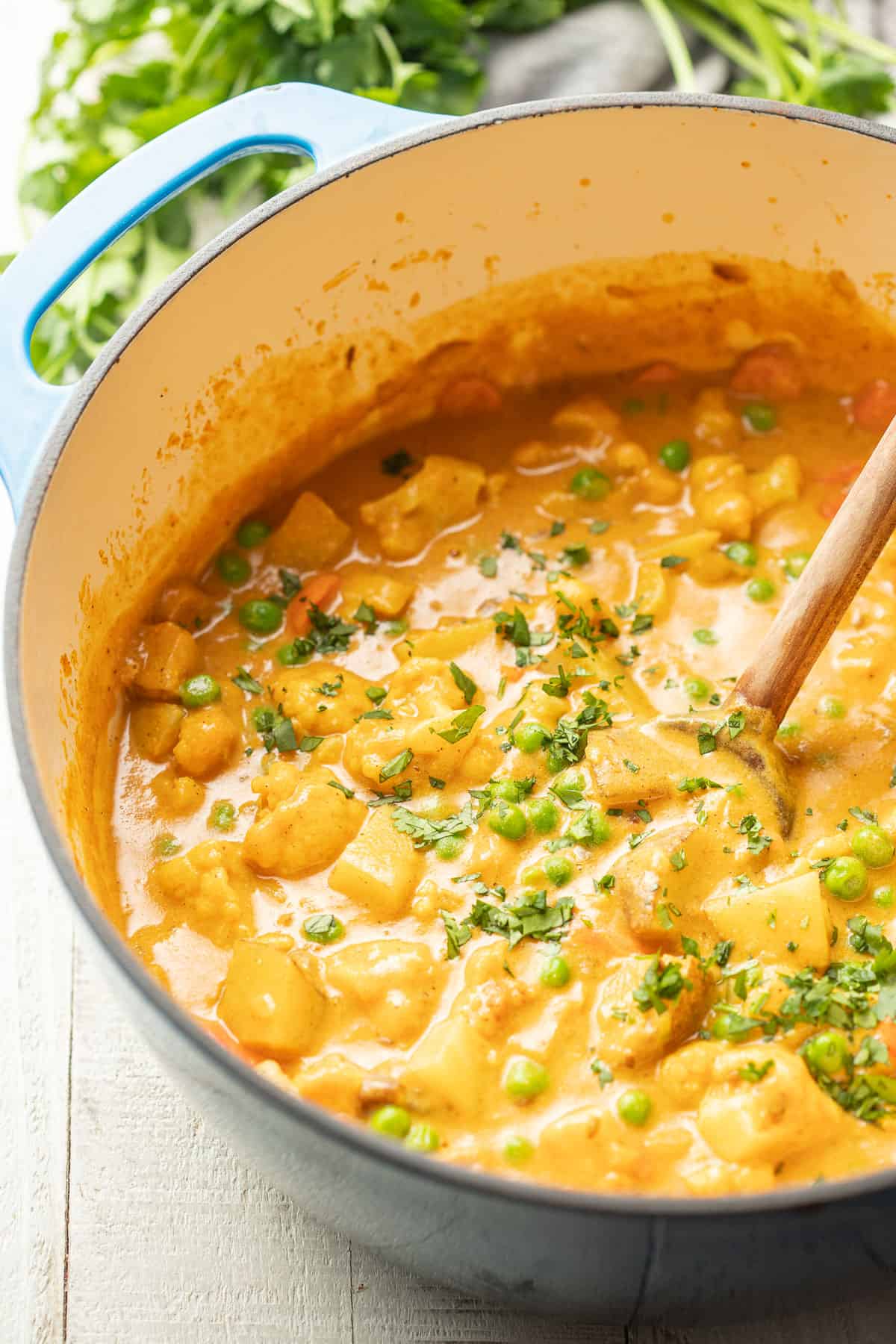
Take the pot off of heat and season the mixture with more salt, if desired, and black pepper to taste. Adjust any other seasonings to suit your taste.
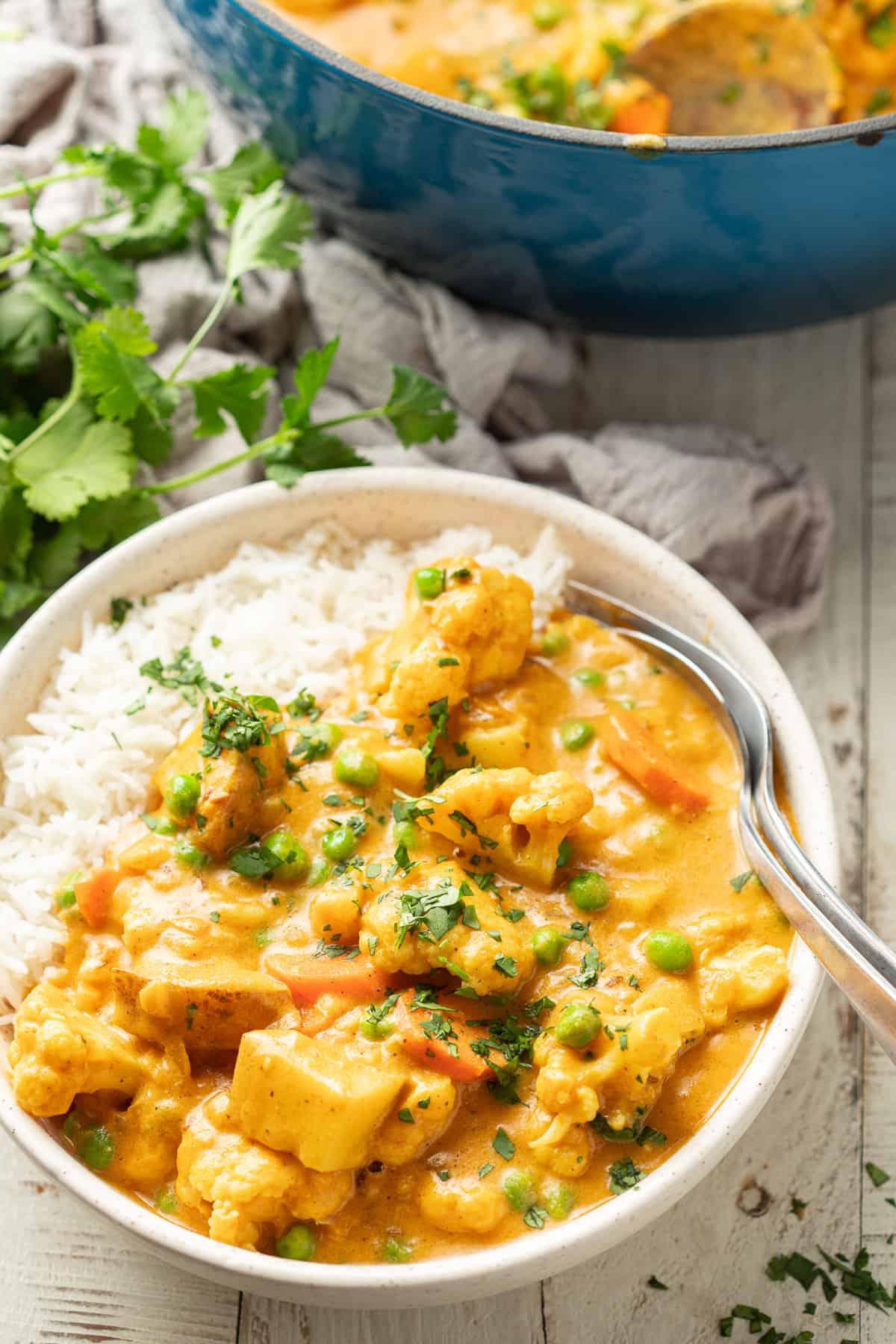
Serve your vegetable korma with some basmati rice and a fresh cilantro. Vegan naan would be another delicious accompaniment. Dig in!
Leftovers & Storage
Leftover vegan vegetable korma will keep in an airtight container in the fridge for a 3 to 4 days.
Frequently Asked Questions
It’s very mild. Feel free to add cayenne pepper if you like your curry hot!
It is!
Like this recipe? If so, please stop back and leave me a review and rating below if you try it! Also be sure to follow me on Facebook, Pinterest or Instagram, or subscribe to my newsletter for more recipes like this one!

Creamy Vegan Vegetable Korma
Ingredients
For the Paste
- ½ cup raw cashews, soaked in water 4-8 hours, drained and rinsed
- cup canned diced tomatoes
- garlic cloves
- tablespoon fresh grated ginger
For the Curry
- tablespoons vegetable oil
- medium onion, diced
- teaspoons garam masala
- teaspoon ground cumin
- teaspoon whole cumin seeds
- ½ teaspoon ground cardamom
- ½ teaspoon ground coriander
- ½ teaspoon ground turmeric
- (14 ounce/400 ml) can full-fat coconut milk
- ½ cup water
- small cauliflower head, broken into florets (about 1 ½ pounds)
- medium potato, scrubbed and cut into ½-inch pieces (about 10 ounces)
- medium carrots, sliced (about 8 ounces total)
- teaspoon salt, plus more to taste if desired
- cup frozen peas, thawed
- Black pepper, to taste
For Serving
- Cooked basmati rice
- Chopped fresh cilantro
Instructions
-
Place all of the paste ingredients into a food processor or blender and blend until smooth. Set aside. (Note 1)
-
Coat the bottom of a large pot with the oil and place it over medium heat. Once the oil is hot, add the onion.
-
Sweat the onion for about 5 minutes, until it starts to soften up and become translucent, stirring frequently.
-
Add the garam masala, ground cumin, cumin seeds, cardamom, coriander, and turmeric to the pot. Cook the spices with the onion, stirring constantly, for about 1 minute.
-
Add the paste to the pot. Stir well and cook the mixture while stirring constantly until it begins to darken and thicken slightly, about 2 minutes.
-
Stir in the coconut milk, water, potato, carrots and 1 teaspoon of salt. Raise the heat and bring the mixture to a boil, stirring occasionally.
-
Lower the heat so that the mixture is at a low simmer. Cover the pot and allow the curry to simmer for about 15 minutes, until the potato is fork tender. Make sure to uncover the pot and give it a stir every few minutes, scraping the bottom of the pot with a spoon to prevent the sauce from scorching.
-
Uncover the pot and let the curry continue simmering for about 5 minutes, until the sauce thickens slightly and the vegetables are very tender.
-
Stir in the peas and continue simmering the curry for about 1 minute, just to heat up the peas.
-
Remove the pot from heat and season the korma with additional salt to taste, as well as black pepper.
-
Serve with basmati rice and a sprinkle of fresh cilantro.
Notes
- If you’re using a larger blending device and have trouble getting the mixture smooth, add up to ½ cup of water, then subtract the amount of water that used when you add water to the curry in step 6.
- This recipe make a mild curry. For some heat, add a bit of cayenne pepper in step 4. For more intense flavor, increase the amount of garam masala.
- Nutrition information does not include rice.
Nutrition
The post Creamy Vegan Vegetable Korma appeared first on Connoisseurus Veg.